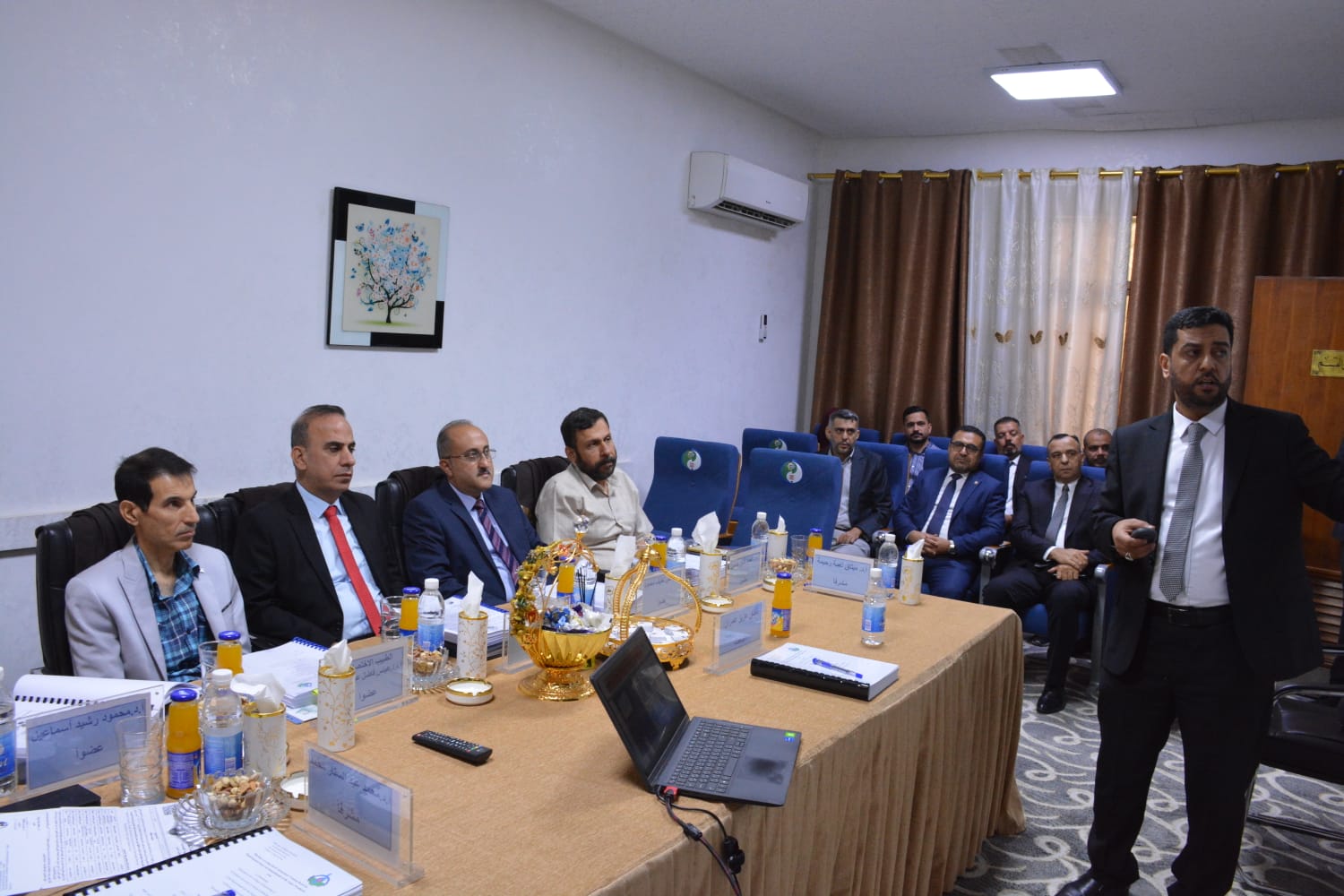Visitors: 20502587 Views
Done By: Electronic and Communications Engineering Department
Post Date: 2024-11-18
Last Browse: 2025-04-05

Faculty member (Assistant Professor Anas Latif Mahmoud) participated in the membership of the discussion committee for the doctoral student (Natiq Aziz Imran) Department of Biomedical Engineering on Thursday 10/31/2024 regarding his thesis entitled
Machine Learning-based Autonomous Training Board for Experimental Study and Rehabilitation of the Upper Prosthetics
The discussion committee was headed by
Professor Dr. Sadiq Hussein Bakhi from the Department of Mechanical Engineering at the University of Technology and the membership of each of
Professor Dr. Mahmoud Rashid Ismail from the Department of Prosthetics and Orthotics Engineering at the University of Nahrain
And Assistant Professor Dr. Abbas Fadhel Abdul Wahab from the College of Medicine at the University of Nahrain and Assistant Professor Dr. Anas Latif Mahmoud from the University of Nahrain / Department of Electronic Engineering and Communications
And Assistant Professor Dr. Ahmed Faeq Hussein from the Department of Artificial Intelligence Engineering / University of Nahrain. The thesis was supervised by each of Professor Dr. Muhammad Abdul Sattar Muhammad from the University of Nahrain and Professor Dr. Mithaq Nima Rahim from the College of Engineering, University of Karbala,
Noting that the message was scientifically evaluated by The first scientific evaluator was Prof. Dr. Nazem Mujbil Faleh from the Department of Mechanical Engineering at Al-Mustansiriya University, and the second scientific evaluator was Prof. Dr. Ali Hussein Muhammad from the Department of Mechanical Engineering at Al-Nahrain University, and linguistically by the lecturer Dr. Mona Mustafa Karim from the Department of Biomedical Engineering at Al-Nahrain University.
The study aims to design a model that controls an open-source robotic arm printed using 3D printing technology with six degrees of freedom (DoF) using surface electromyography (sEMG) signals taken from the Myo wireless gesture bracelet, and distinguish between a group of hand gestures from healthy people. Six time domain features were extracted from each part, as the model used in this study provided an update to the existing models in terms of degrees of freedom of movement and time domain features, which greatly reduces the effort on the patient and facilitates the use of the arm. The thesis was accepted as it meets the requirements for obtaining a doctorate degree.